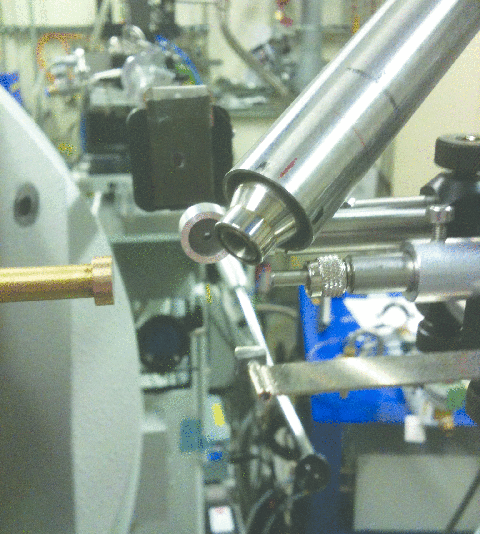Photocrystallography
 Photocrystallography is a rapidly developing technique that involves the determination of the full three-dimensional structure of a molecule or array material, using single-crystal X-ray diffraction techniques, while the molecular components are in a photoactivated metastable or short-lived high-energy state. The photoactivation is usually achieved by irradiating the single crystal with a laser or a set of LED lights in the ultra-violet or visible wavelength range.
Photocrystallography is a rapidly developing technique that involves the determination of the full three-dimensional structure of a molecule or array material, using single-crystal X-ray diffraction techniques, while the molecular components are in a photoactivated metastable or short-lived high-energy state. The photoactivation is usually achieved by irradiating the single crystal with a laser or a set of LED lights in the ultra-violet or visible wavelength range.
To date photocrystallography has been used to study the structures of metastable linkage isomers of transition metal coordination complexes, and to investigate the changes in coordination geometry in mononuclear complexes.
In a complex that undergoes linkage isomerism, the compound contains one or more ligands that are capable of bonding to the metal centre in more than one way. At present, investigations at short lifetimes remain the domain of fast spectroscopy. Thus a combination of photocrystallography and time-resolved spectroscopy allows the evolution of structure with time to be evaluated.
The paper by Casaretto et al. [(2015). IUCrJ, 2, 35-44; doi:10.1107/S2052252514023598] provides new insights into the photactivated linkage isomerisation process and sets the benchmark for further studies that will lead to the development of electronic devices based on these materials.
[Raithby, P.R. (2015). IUCrJ, 2, 5-6; doi:10.1107/S2052252514026980]


